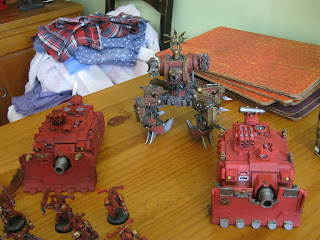I’ve spent the last few weeks playing my way through this
game. How did I come to own it? Believe it or not, my thing for the year is to
try to finish one game for ever letter of the alphabet. This has resulted in
some strange purchases, and some scouting around for games that begin
with Q, U, Y and Z. I had a vague memory of watching a TotalBiscuit Youtube
video on this one, and bought the game thinking that if it had been awful, I’d
have remembered it.
And actually it didn’t turn out too bad in the end. You play
as Yaiba Kamikaze, a rogue ninja who is looking for revenge against his rival
Ryu Hayabusa who killed him. Yaiba has been brought back to life as a cyborg
with a mechanical arm and a ‘cyber-vision’ eye. To get to Hayabusa, he’s got to
battle his way through hordes of Zombies of varying types. He’s helped along
the way by his navigator, the girl with a massive potential for
over-sexualisation Ms Monday, and wound up as he goes along by a smarmy
Spaniard called Del Gonzo. It is well presented with a cell-shading style, and
while the script is puerile, the voice acting is reasonably well-done. Del
Gonzo, in particular, has some fantastic lines and his voice actor delivers
them with just the right amount of panache.
 |
| The obligatory 'Rage' mode... |
The gameplay is solid enough. It’s in the genre commonly
known as Spectacle Fighters, which as far as I know means a scrolling
beat-em-up with impressive moves. Yaiba can switch between his sword, cyber arm
or a flail at any time by pressing the attack button assigned to each one, and
can also harvest extra weapons from some of the larger enemies. Each attack has
a different function – the sword is quick and best used for glancing blows, the
arm does a lot of damage but is slow, and the flail goes around Yaiba and is
best used for attacking a group of enemies surrounding you. But combining
attacks in a different order can make for some pretty impressive combos. There
is a block/counter button, and can be used to great effect but with my usual
approach to things I never really got used to using it. There’s a lot of fun to
be had in slaughtering your way through a Zombie horde, but some of the fights
are actually quite tough and there’s an ‘old-school’ feeling of accomplishment
as you get through a fight you’ve been stuck on for a while.
Unfortunately the game is let down by a couple of things
that get in the way of you enjoying it. The screen isn’t balanced properly and
enemies can be hiding in the sides, attacking from a place that you can’t see
them. This isn’t usually a problem because the enemies in the sides of the
screen are the least of your problems most of the time, but the fight with
Hayabusa is a lot harder than it needs to be because he comes flying at you
from where you can’t see him winding up the attack; I won it eventually but
more by luck than judgement. According to TotalBiscuit the PC version has a
‘wide-shot’ mode that stops some of this from happening, but rather than have
to put a graphical fix in there, why not just get it right in the first place?
Also the game is boss hard. Even on normal difficulty, some
of those boss battles are ferocious and the final boss of the game took me
nearly three days. I’ll admit to using a wiki to find out what I had to do to
beat him, or I’d still be doing it now. Is that cheating? Perhaps, but remember
that even though I knew what to do in the final fight, it was a massive effort
to make it happen.
All in all though I’ve enjoyed my time with Yaiba: Ninja
Gaiden Z. It’s not the best game I’ve ever played but it is fun in its own way
and I’m glad I didn’t overlook it. The game has more content and added
difficulty, but for now it’s time to move on.







